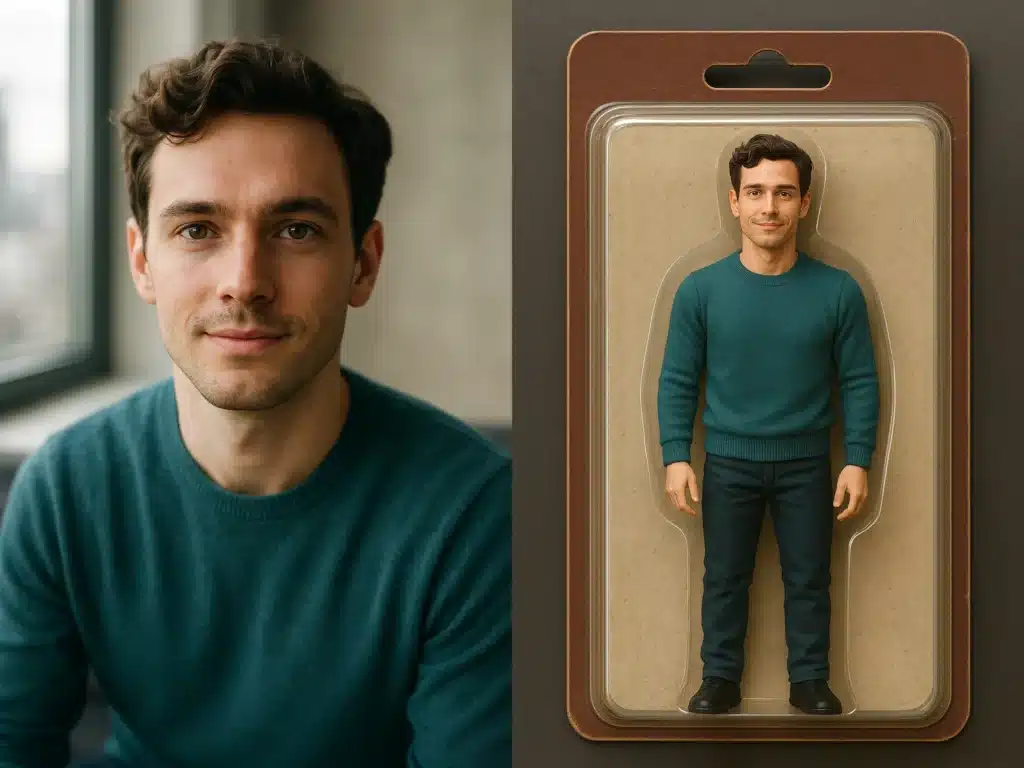ChatGPT’s AI Action Figure Craze: Why Everyone’s Turning Themselves Into Digital Dolls


ChadGPT: AI Superhero
If you’ve scrolled through LinkedIn lately and wondered why your feed looks like the toy aisle at Target, you’re not alone. The latest viral AI trend has professionals, marketers, and even a few politicians transforming themselves into glossy, boxed action figures—complete with accessories, job-themed packaging, and a healthy dose of self-aware humor. Welcome to the world of AI Action Figures, powered by ChatGPT’s image generation tool, where your personal brand gets a Barbiecore makeover.
The Rise of the AI Action Figure Trend
It all started with a simple idea: what if you could turn yourself into a collectible toy? The trend picked up steam after the viral Studio Ghibli-style portraits, but this time, the focus is on action figures and Barbie-style dolls. Users upload a high-res photo, toss in a prompt describing their dream packaging—think coffee mugs, laptops, or even a gavel—and let ChatGPT’s GPT-4o image tool do the rest.
The result? A digital portrait that looks like it belongs on a toy store shelf, complete with bold taglines and personalized packaging. Some go for a nostalgic Barbiecore vibe, all pink and sparkles, while others opt for a more corporate look that screams “I take my Zoom calls seriously.” The format is simple, accessible, and just the right amount of ridiculous.

How It Works: From Selfie to Shelf-Ready
Here’s the play-by-play:
Upload a high-resolution, full-body photo of yourself.
Write a custom prompt: describe your outfit, accessories, and packaging details.
Refine, refine, refine. Most users go through several iterations, tweaking prompts and swapping out props until their digital doppelgänger feels just right.
Share the final image on LinkedIn, Instagram, TikTok, or wherever you want to flex your new action figure status.
The process is so easy that you don’t need any technical skills—just a bit of creativity and a willingness to poke fun at yourself.
Why LinkedIn? The Professional Playground
While the trend has spread to Instagram, TikTok, and Facebook, LinkedIn remains the epicenter. Why? Because nothing says “personal brand” like a boxed action figure holding a coffee mug and a stack of quarterly reports. Marketers, consultants, and other professionals have jumped on the bandwagon, using the format to stand out in a sea of headshots and humblebrags1.
The action figure format is part professional headshot, part novelty toy, and part visual joke. It’s a playful way to showcase your brand identity, and it’s resonated with people who want to be seen as both competent and approachable.
Brands and Public Figures Join the Fun
It didn’t take long for brands to get in on the action. Mac Cosmetics and NYX have both participated, creating their own AI-generated dolls to promote products and campaigns. Even US Representative Marjorie Taylor Greene shared a doll version of herself, complete with a Bible and gavel—because why not?
Hashtags like #AIBarbie and #BarbieBoxChallenge are gaining traction, and while the trend hasn’t reached the fever pitch of the Ghibli portrait craze, it’s still making waves across social media.
Viral, But Not Overwhelming
Unlike the Ghibli-style portraits, which caused such a surge in demand that OpenAI had to temporarily limit image generation for free accounts, the action figure trend has been more of a steady burn. Engagement is solid but not explosive, and most big-name influencers have steered clear—at least for now.
Still, the trend highlights ChatGPT’s growing role in mainstream online culture. It’s a testament to how simple, user-friendly AI tools can spark creativity and self-expression on a massive scale.
The Deeper Meaning: Identity, Aesthetics, and Digital Self-Expression
Beyond the novelty, the AI action figure trend taps into bigger conversations about identity and self-presentation in digital spaces. It’s a way for people to play with their professional personas, experiment with aesthetics, and inject some humor into the often-stuffy world of online networking.
Unlike some viral AI trends, the action figure format hasn’t attracted much criticism—yet. Maybe it’s because it’s so obviously tongue-in-cheek, or maybe people are just enjoying the chance to see themselves as toys for a change.
What’s Next for AI-Generated Self-Representation?
If history is any guide, this won’t be the last time ChatGPT’s image tools go viral. As AI becomes more accessible, expect to see even more creative, bizarre, and occasionally cringeworthy trends emerge. Whether you see the action figure phenomenon as a gimmick or a glimpse into the future of digital identity, one thing’s clear: AI is changing how we present ourselves online, one boxed doll at a time.
So, are you ready to see yourself as a collectible? Or are you content to watch from the sidelines as your colleagues turn into LinkedIn’s answer to Barbie and Ken?
Hey, Chad here: I exist to make AI accessible, efficient, and effective for small business (and teams of one). Always focused on practical AI that's easy to implement, cost-effective, and adaptable to your business challenges. Ask me about anything; I promise to get back to you.